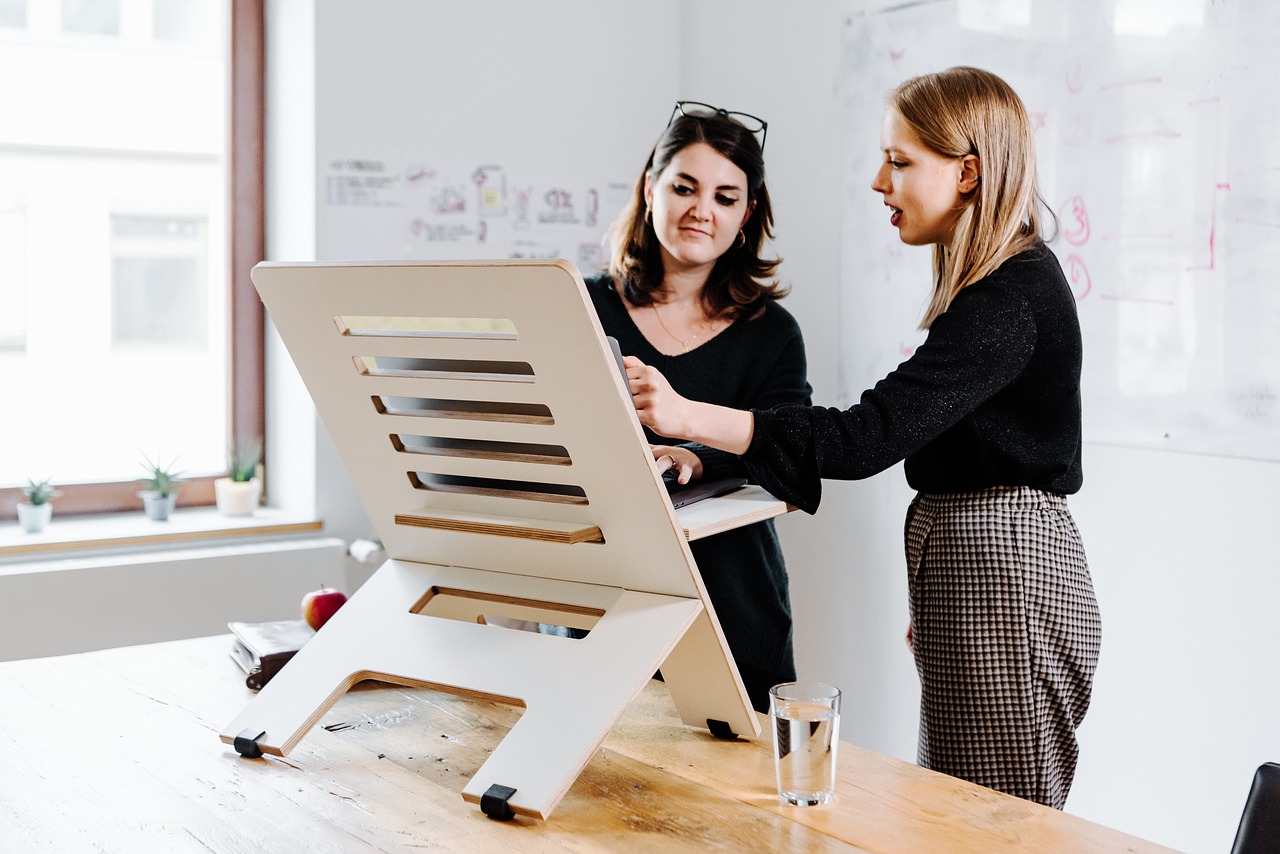Standing Vs Sitting
If your job requires you to sit at a desk for long periods of time, you’ve probably felt the effects of it in joint stiffness and muscle pain. Standing desks are meant to be better for you but are they? Some people believe that sitting down at a desk is far more comfortable, whereas others think that they get more work done while standing. This has then given way to the great desk debate. Which one is better? Read on to find out.
Standing Desks
A standing desk is exactly as it sounds. It is a piece of furniture that allows you to work while standing up, and it is purported to have some benefits. First, it allows you to burn more calories which prevents weight gain and improves your fitness levels overall. Second, standing for long periods of time can also improve your circulation, get the blood pumping, and thus reduce your risks of cardiovascular diseases. Third, you are also less likely to experience joint and muscle pain than if you were to sit at a desk. Lastly, some people do believe that it makes you more productive.
On the other hand, there are some cons to standing desks too. Firstly, standing for long periods of time can be hard on the body, too, specifically the feet and legs. However, the shoulders and arms can suffer too if you don’t move them enough during your fay. In addition, it can be hard to get used to because sitting is the default, and standing desks represent a whole new way of working. Some people get bored of standing, so they go back to sitting desks because they are more comfortable.
Sitting Desks
Most people are familiar with sitting desks. You sit at a desk and work. Often, they offer more comfort, and you have the choice between sitting and standing. These desks represent the default which means they are often a lot easier to contend with, especially at the start. In addition, sitting desks are often the only option for people who suffer from mobility issues as they are more inclusive than standing desks.
However, sitting desks have their downsides too. Sitting down hunched over a desk for long periods of time often has a negative effect on your posture. Some people report more feelings of lethargy and fatigue from sitting down for too long. It can also pose increased risks for your health.
So, Which is Better?
This question does not have an easy answer because there are benefits and downsides to both. In the end, it will come down to personal preference. However, there are a lot of arguments for getting a hybrid or adjustable desk that allows you to sit for part of the day and stand for the rest. By investing in a hybrid desk and an ergonomic desk chair, you ensure that you get the best of both worlds.
However, it is not always easy to choose the right piece of furniture, and it is important as it can be a big investment. Not to worry, there are a lot of resources online, including this article by Branch Furniture, which can help when it comes to choosing an office chair. Branch furniture also has a range of furniture options that you can utilise when it comes to getting your office set up right.
Improving Your Fitness at Work
There are a lot of things that you can do to improve your fitness during the workday, whether you opt for a sitting or standing desk. Firstly, you should try to take more breaks. Get up and move around regularly during your workday. If you don’t take enough breaks, your body is more likely to get fatigued and stressed and often, it is harder to concentrate on tasks. Small breaks allow the brain to return more focussed. Whether standing or sitting, you should be looking to move around a little every couple of hours. If you are standing, you may also want to sit down every so often. In general, switching between the two positions is the most beneficial for you physically and mentally.
Next, you should always try to leave your office during your lunch breaks, even if you bring your lunch in from home. You could either walk to a park to eat or walk to a store or restaurant to buy your lunch. Leaving the office allows you to get some much-needed fresh air, and it gives your brain a bit of a break from seeing the same views all day. This then allows you to return after lunch more energised and better able to start work again.
You could also look into getting a fitness tracker like a Fitbit or an apple watch. You can use this to monitor your activity levels throughout the day. This can then give you an idea of where you could improve. For example, you might find that you do enough activity before and after work to offset your lack of activity while you are working. Either way, using a fitness tracker gives you data that you can use to plan your exercise and see your improvements in real-time.
Lastly, you could try to incorporate some exercises into your day. If you opt to use a sitting desk, then why not do some seated exercises? There are a lot of different exercises that you do while you are sat at your desk, and they vary in ease and subtlety. You can find some that you can do without your co-workers noticing, don’t worry. If you choose a standing desk, it is probably more about stretching than doing exercises just to make sure that your limbs don’t seize up or stiffen from standing for too long. However, most people who stand tend to engage in small movements or almost fidget like behaviour anyway.
In Conclusion
As mentioned above, there are benefits to both a standing and sitting desk, which is why a hybrid desk is probably the best option, as it allows you to adjust the desk throughout the day. You can also do a number of other things to improve your fitness at work. Just because you work in an office or you don’t have a particularly active job doesn’t mean that your fitness or health has to suffer.

